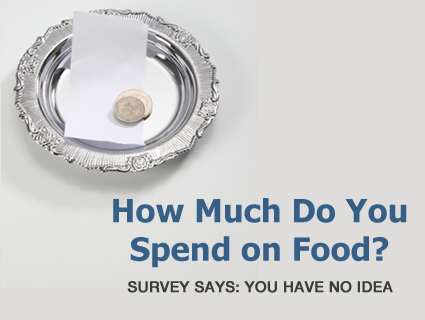
Editors’ note: The US House of Representatives has voted to cut $40 billion from the food-stamp program, and to limit the time many recipients can get benefits. Use our calculator to see how your grocery spending stacks up against the government-set “thrifty” household food budget—the number the food-stamp allotment is based on.
Do you have any idea how much you spend on food? A few of us here at Mother Jones tracked our habits and were surprised (and appalled) to see the damage. Suspecting we weren’t alone, we decided to do a little research. The result is this calculator, which allows you to see how your spending compares to that of others in the United States, your city, and various kinds of households and income brackets. You can also compare your budget to USDA recommendations.
In case you’re wondering how we know all this: Most of the data comes from Bundle.com, a startup that tracks US spending trends by studying the credit card transactions of 20 million American households each year. Bundle gets credit card data from Citigroup—one of its major investors—scrubbed of names and other identifying characteristics. We looked at Bundle data from 2009 for the biggest 100 US cities and noticed some fascinating foodie trends. For instance, Austin, Texas, spends almost twice the national average for dining out; five Detroit households could eat for a year on an average Austinite’s food budget. (See the full data here and here.) You can also compare your personal grocery budget to what you’d get on food stamps under the USDA’s “Thrifty” plan, the basis for SNAP (food stamp) allotments.
So where does your household stack up? Guesstimate your weekly spending below—by household or as an individual, your choice—and take a look. If your results whet your appetite for some food budget tips, stay tuned: This week, Kiera chronicles her attempts to curb her take-out addiction and cut her spending, and Tasneem will offer up insights on food spending trends in the United States. The hope is that by shedding some light on where exactly dining dollars go, we’ll spark a larger conversation—after all, the way we spend our personal food dollars has massive social and environmental implications for our global food system (hat tip Tom Philpott).
Share thoughts on your calculator results on Twitter with the hashtag #mojofood—we’re tracking your reactions for a future post.
Loading . . .














